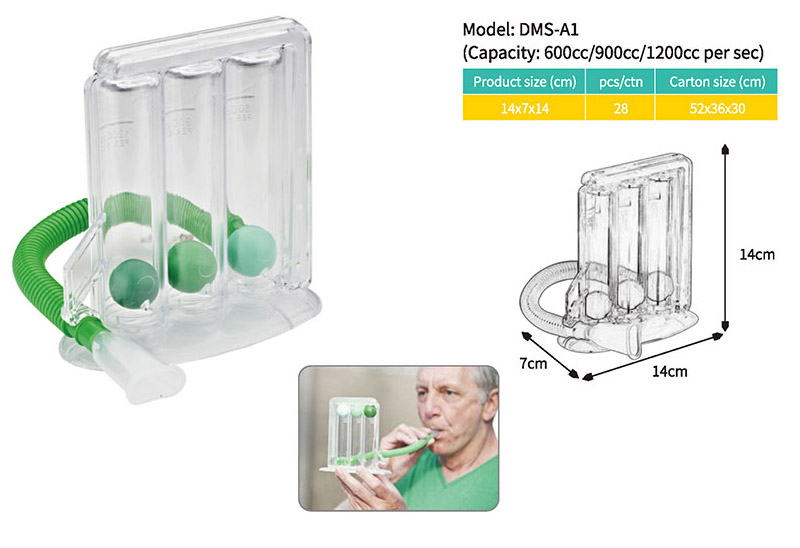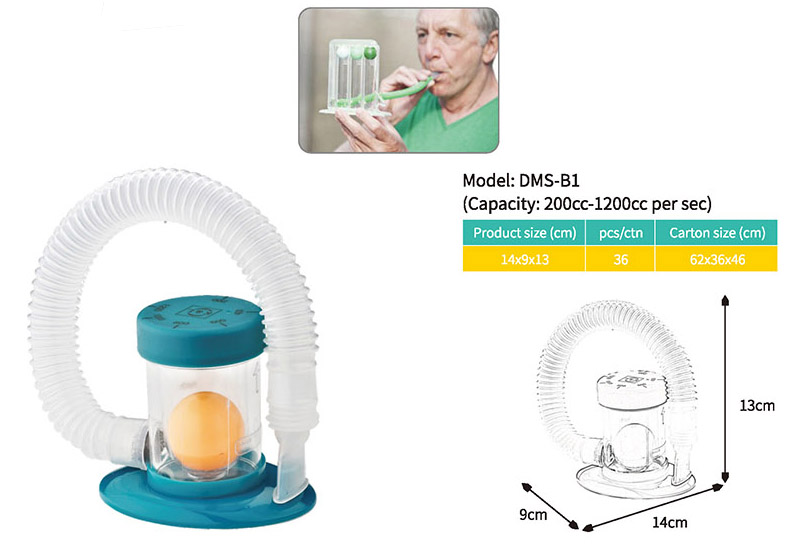How to self-manage patients with bronchial asthma
The goal of asthma treatment is to achieve control of asthma symptoms, reduce the risk of exacerbations and reduce the risk of irreversible damage to lung function. To achieve the goal of asthma control, improving the self-management level of asthma patients is a very important part.
How can asthma patients manage themselves?
Correct knowledge of asthma.
Asthma is a chronic respiratory disease mainly characterized by chronic airway inflammatory response. Although it is currently incurable, it can be effectively controlled through drug treatment and other means to minimize the number of attacks and irreversible damage to lung function.
Asthma prevention and treatment.
Know and avoid exposure to asthma triggers: Many allergens and triggers can lead to asthma exacerbations. Patients should know which allergens or triggers are triggers for their own asthma attacks, and avoid or reduce exposure to these triggers as much as possible. factor.
| Common asthma triggers | |
| Triggers | Allergens or Related Triggers |
| Acute upper respiratory tract infection | Virus, bacteria, mycoplasma, etc. |
| Indoor allergens | Dust mites, domestic pets, mold, cockroaches, etc. |
| Outdoor allergens | Pollen, grass powder, etc. |
| Occupational allergens | Paints, feeds, reactive dyes, etc. Food, fish, shrimp, eggs, milk, etc. |
| Non-allergenic factors | Cold, exercise, stress, anxiety, overwork, smoke (including tobacco, kitchen fumes, polluted air, etc.) irritating foods, etc. |
The standard treatment of asthma is the long-term use of long-acting inhaled drugs, and fast-acting bronchodilators, such as albuterol, can be used when symptoms recur occasionally. However, in acute exacerbations, hospitalization is required, causative therapy, and possibly intravenous hormonal therapy for severe asthma attacks.
Learn how to use the inhaler correctly.
There are many types of inhalation devices, and improper use can lead to poor asthma control due to the inability of the drugs to reach the airways and to exert sufficient anti-inflammatory effects, and increase the incidence of acute asthma attacks.
The risk of action, as well as the increase of adverse reactions of inhaled drugs due to excessive deposition of drugs in the oropharynx, and even the emotional resistance of patients to inhaled preparations.
When the patient uses it for the first time, the doctor can guide the use or watch the use tutorial, and the doctor can let the patient participate in the selection of the inhalation device suitable for him, which is more conducive to the patient's use compliance.
| Selection and Characteristics of Inhalation Devices Commonly Used in Asthma Treatment | ||
| Asthma conditions | inhalation device selection | key features |
| Light to moderate | Metered dose pressure aerosol (pMDI) | It is convenient and cheap, but it needs the cooperation of pressing medicine and inhalation, so the lung deposition rate varies greatly. Under normal circumstances, about 10% to 15% can reach the lungs |
| pMDI+ spacer | There is no need for the cooperation of pressing medicine and inhalation, which reduces the deposition of drugs in the oropharynx, and the deposition rate in the lungs is about 20%~30%; but the larger volume of plastic fog storage tank is easy to generate static electricity | |
| Dry powder inhaler (DPI) | Portable and easy to start inhalation, no need to cooperate with drug delivery and inhalation, but requires a certain inspiratory speed Lungs are less effective in critically ill and debilitated patients; DPI has higher pulmonary deposition rates than pMDI when done correctly | |
| Moderate to severe | Dry powder inhaler (DPI) | Ditto |
| Compressed nebulizer solution for nebulizer inhalation | Requires deep, slow tidal breathing with a lung deposition rate of about 10% | |
| Critical | Compression nebulizer or ventilator (side port connects to storage tank) | Requires deep, slow tidal breathing with a lung deposition rate of about 10% Solution nebulizer sucks |
| Note: For the detailed usage of various inhalation devices, please refer to their instruction manuals or consult professional nurses | ||
Use self-management tools.
In addition to regular medication, we must also learn to assess our own condition. Two disease monitoring tools are recommended:
One is an assessment tool of the asthma questionnaire, including the ACT questionnaire and the asthma control questionnaire (ACQ); the other is daily PEF monitoring using a peak flow meter, which is easy to carry and easy to operate, and patients can self-monitor PEF at home, which can directly reflect Airway ventilation to predict whether an exacerbation will occur.
Recognition and management of precursors of asthma exacerbations
There are two ways to judge the aura of an acute asthma attack: one is based on symptoms, the aura symptoms of an acute asthma attack include cough, chest tightness, shortness of breath, etc.; the second method is based on the results of PEF monitoring, if the patient's PEF If the value falls to 60% to 80% or less of the normal predicted value or personal best value in the near future, one needs to be alert to the risk of acute exacerbation in the near future.
Self-treatment options for the onset of an asthma exacerbation:
(1) Using SABA: 1 to 2 puffs, if necessary, inhale once every 4 to 8 hours, but it should not exceed 8 puffs at most within 24 hours. The use of budesonide/formoterol as a reliever can reduce the risk of severe acute exacerbation. When there is a precursor to an asthma exacerbation, budesonide/formoterol (160/4.5 μg) can be added for 1 to 2 inhalations to relieve symptoms , the maximum daily dose is generally not more than 6 inhalation.
(2) Increase of control drugs: When symptoms persist after using reliever drugs, PEF cannot return to the normal predicted value or personal best value, and it is necessary to increase control drugs, such as increasing the dose of ICS, or adding other control drugs.
(3) Add oral hormones and seek medical attention: When symptoms continue to worsen after taking the above measures, oral hormones, such as prednisone 0.5-1.0 mg/kg, can be added and seek medical treatment in a medical institution in time.


